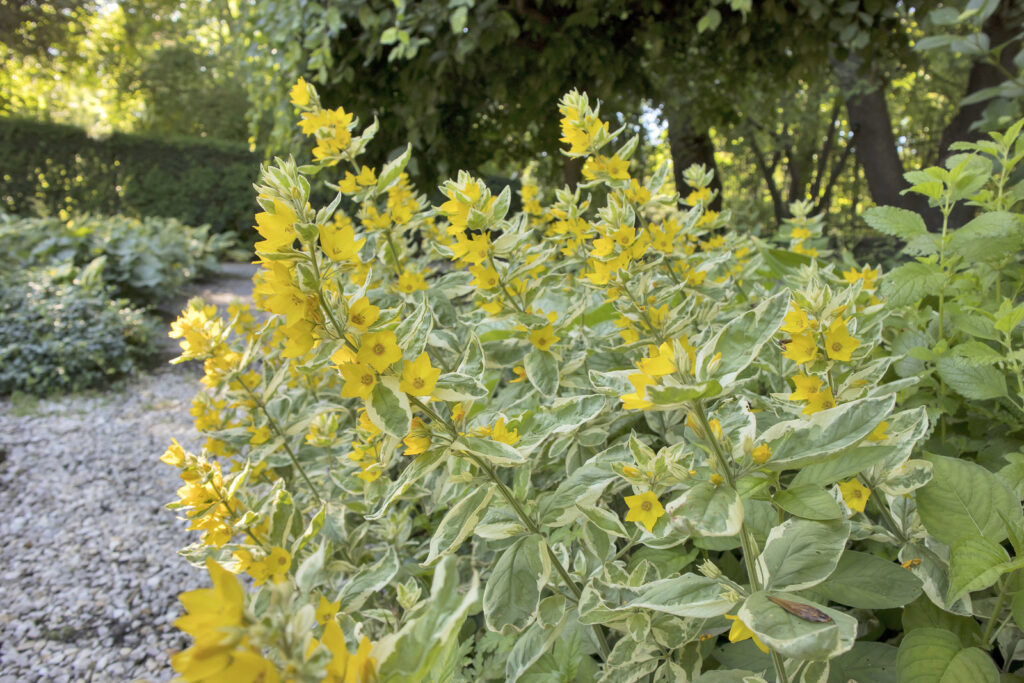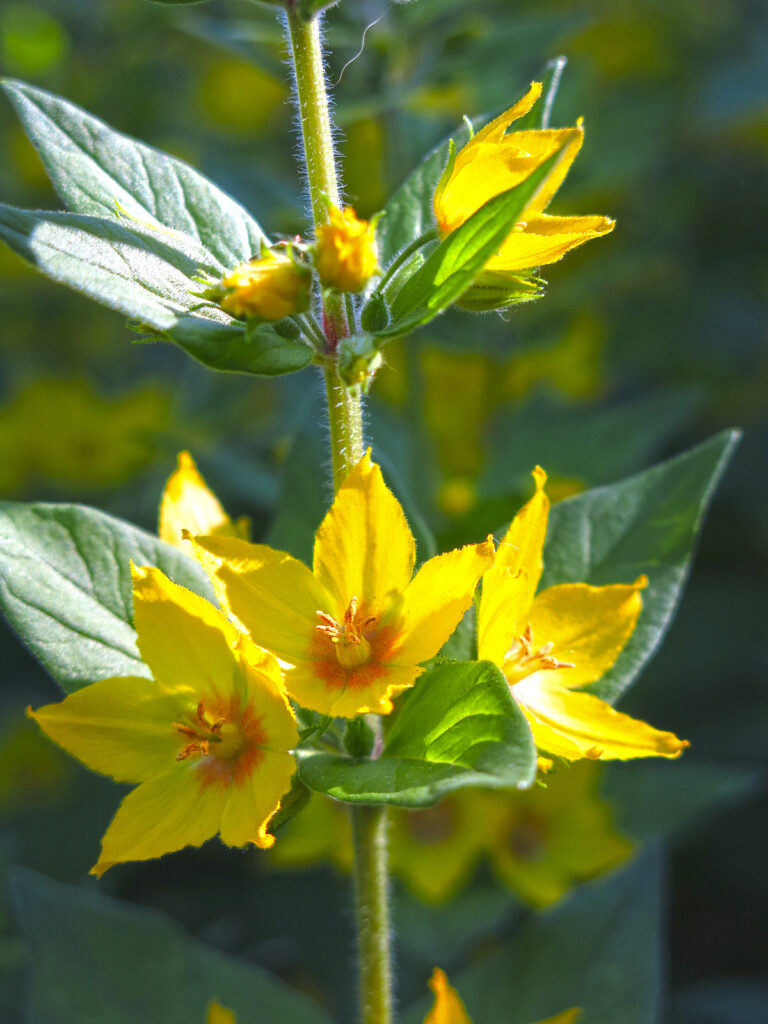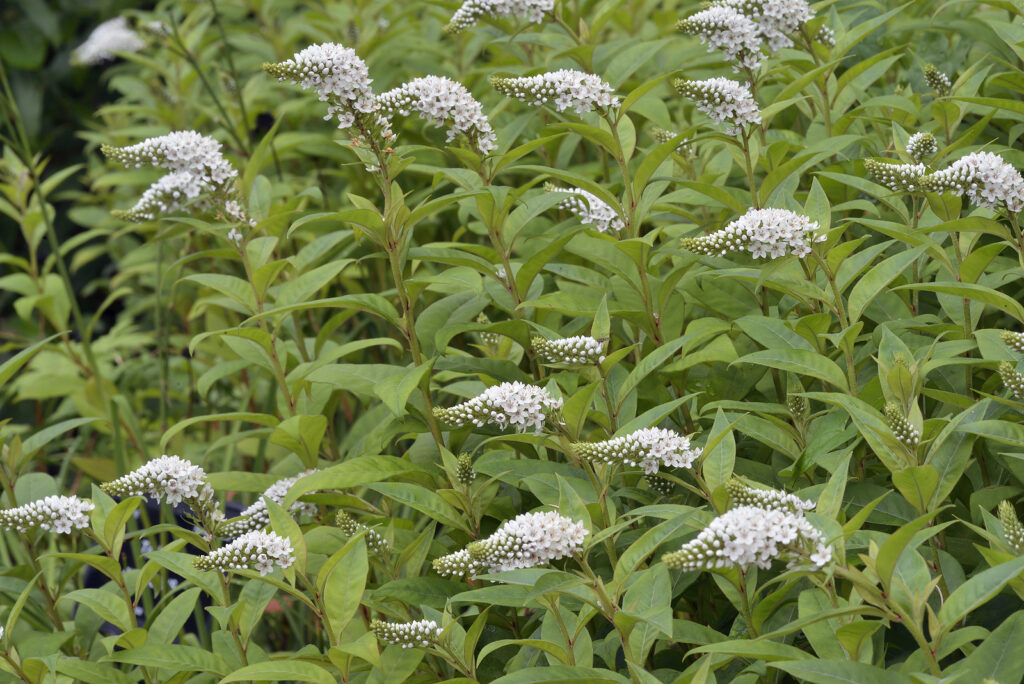Gooseneck loosestrife, Lysimachia, is an upright clump-forming perennial with lance-shaped mid-green leaves and arching, tapered yellow or white flower clusters from mid-to-late summer. Gooseneck loosestrife is cold hardy and a good choice for semi-wild areas or toward the back of beds.
Lysimachia is a genus of about 150 species. The perennials range from erect, clump-forming plants to creeping species suitable for ground cover.
Lysimachia is commonly called loosestrifes; they should not be confused with the perennial weed called loosestrife (Lythrum).
Lysimachia bears five-petaled flowers that are usually yellow or white; they can be star-shaped or cup or saucer-shaped. Blooms appear singly or in racemes or panicles.
Grow Lysimachia in full sun or partial shade in rich, well-drained, and evenly moist soil. Loosestrifes can be grown in bog gardens or near ponds and in moist borders. They do not tolerate drought.
Lysimachia spreads by rhizomes and can become invasive. to control the spread, divide plants in spring or fall. Loosestrife self-sows and can be propagated by root cuttings taken in spring or summer.

Get to know Lysimachia
- Plant type: Perennial
- Growing Zones and range: Zones 3-8
- Hardiness: Hardy
- Height and width: 36 inches (91cm) tall and wide
- Foliage: Opposite, alternate, or whorled leaves are often hairy
- Flowers: Five-petalled flowers vary from star-shaped, saucer, or cup-shaped usually yellow or white
- Bloom time: Late summer
- Uses: Spreads to form a dense colony
- Common name: Loosestrife, gooseneck loosestrife
- Botanical name: Lysimachia spp.
- Family: Primulaceae
- Origin: Subtropical regions including South Africa
Where to plant Lysimachia
- Plant Lysimachia in full sun.
- Grow Lysimachia in average to humus-rich soil.

When to plant Lysimachia
- Set established plants in the garden in spring and fall.
- Sow seed in spring.
Planting and spacing Lysimachia
- Space Lysimachia 3 feet (1m) apart; plants readily spread to form a colony.
- Sow seed 1/8 inch deep in evenly prepared soil or indoors in light potting soil.
How to water and feed Lysimachia
- Gooseneck loosestrife needs ample moisture; keep the soil evenly moist. Established plants will tolerate dry conditions.
- Gooseneck loosestrife does not require feeding.

Lysimachia care
- Contain gooseneck loosestrife from spreading by placing an underground barrier around plants.
Lysimachia pests and diseases
- Rust and leaf spot can occur.
Lysimachia propagation
- Sow seed in containers outdoors in spring.
- Divide plants in spring or autumn.

Lysimachia varieties to grow
- Lysimachia barystachys: Erect perennial with lance-shaped leaves bears dense pendant then erect races to 12 inches of star-shaped white flower.
- L. ciliata: Erect perennial with 6-inch long leaves bears solitary or paired, slightly pendant, star-shaped yellow flowers.
- L. clethroides: fast-spreading perennial with erect stems, lance-shaped leaves, with saucer-shaped white flowers in dense racemes.
- L. ephemerum: clump-forming perennial with gray-green leaves, and saucer-shaped white flowers in terminal racemes.
- L. longifolia: upright perennial with linear leaves bears solitary, cup-shaped, golden yellow flowers.
- L. nummularia, called Creeping Jenny, is a perennial groundcover with rounded leaves and golden yellow flowers.
- L. punctata, yellow loosestrife: perennial with lance-shaped leaves has brilliant cup-shaped yellow blooms on 3-foot stems; it requires ample moisture
- L. vulgaris, yellow loosestrife: perennial with erect stems and ovate leaves bears cupped yellow flowers.















